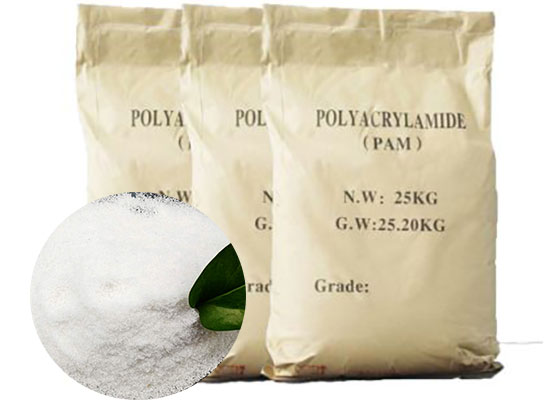
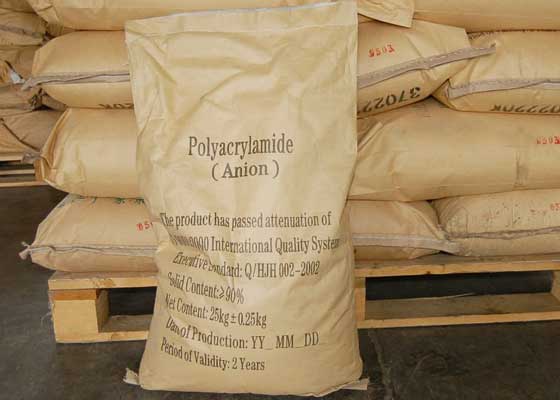
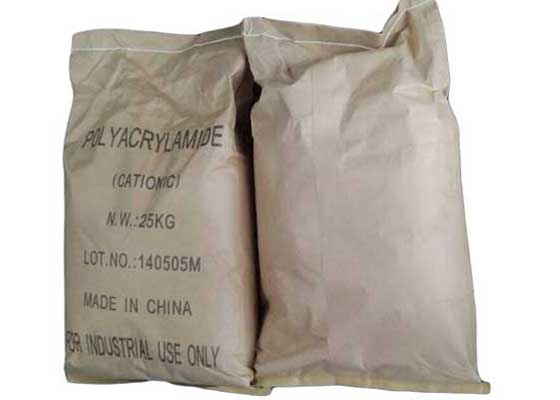
PAM Polyacrylamide Powder
- CAS No: 9003-05-8
- HS Code: 39069010
- MF: (C3H5NO)n
- Ionic Type: Anionic, Cationic, Nonionic
- Appearance: White Powder
- Solid Content ,(%): ≥90
What Are Types of PAM Polyacrylamide for Sale in Fengbai
Polyacrylamide (PAM) is a linear organic polymer, and it is the most widely used flocculant in water treatment chemicals. It can enhance flocculation, reduce the cost of clean water, improve water quality, and remove organic matter and algae in the water. PAM chemical has a wide range of applications in water treatment, petroleum exploration, textile, papermaking, mineral processing, medicine, agriculture and other industrial fields. Would like to get the quotation from Henan Fengbai? Feel free to inquiry us online now.
There are four types of polyacrylamide, they are Anionic Polyacrylamide(APAM), Cationic Polyacrylamide(CPAM), Nonionic Polyacrylamide(NPAM), Amphoteric Polyacrylamide. They can be used as effective flocculants, thickeners, paper intensifiers and liquid drag reducer. Please feel free to contact us to find out which kind of PAM is best for your business.
-
Anionic Polyacrylamide (APAM)
-
Cationic Polyacrylamide (CPAM)
-
Nonionic Polyacrylamide (NPAM)
- Amphoteric Polyacrylamide
Anionic Polyacrylamide APAM is white powder. Its water solubility is good, can dissolve in any proportion of water and insoluble in organic solvents. Mainly used for flocculation and sedimentation treatment of various industrial wastewater, such as steel plant wastewater, electroplating plant wastewater, metallurgical wastewater, coal washing wastewater, and other sewage treatment. It can also be used to clarify and purify drinking water.
Application of APAM:
1.Polyacrylamide water treatment. It has the best effect on the treatment of neutral or alkaline sewage with thick suspended particles, high concentration, cations with positive charges, and with a PH value of 7-14. Such as iron and steel wastewater, electroplating plant wastewater, metallurgical wastewater, coal washing wastewater, and other sewage.
2.PAM water treatment. Many sources of domestic water come from rivers and lakes, with high sediment and mineral content. Although it is filtered by precipitation, it is still not up to standard. At this point, flocculant should be added. Using anionic polyacrylamide as a flocculant, the dosage is 2%-5% of the non-polar flocculant, but the effect is dozens of times that of inorganic solvent.
| Item | Anionic Polyacrylamide(APAM) |
| Solid Content ,(%) | ≥90 |
| Molecular Weight, (million) | 18~22 million |
| Hydrolyzing degree ,(%) | 10~30 |
| Effective pH value | 7.0~14.0 |
| Dissolving time(minutes) | ≤90 |
| Packing | Net 25kg / paper bag with inner plastic bag |
Cationic Polyacrylamide CPAM is a linear polymer compound. Because it has a variety of active groups, it can adsorb hydrogen bonds with many substances and has the functions of removing turbidity, decoloring, adsorption, adhesion and so on. It is suitable for wastewater treatment in dyeing, paper making, food, construction, metallurgy, mineral processing, oil field, aquatic product processing, and fermentation, etc. Especially suitable for the dewatering treatment of municipal sewage, municipal sludge, papermaking sludge.
CPAM application:
1. As a flocculant, Cationic Polyacrylamide is mainly used in industrial solid-liquid separation processes, including sedimentation, clarification, concentration, and sludge dewatering processes. It is commonly used in industrial wastewater, urban sewage, food processing wastewater treatment. Through its excellent bridging condensation function, the colloidal particles are aggregated into large flocculent and then separated from the suspension. The effect is obvious, adding less.
2.Cationic Polyacrylamide can be used as a dry strength agent, retention agent and filter agent in the paper industry. It can greatly improve the quality of paper, save costs, improve the production capacity of paper mills. It can be direct with inorganic salt ions, fibers, and other organic polymers electrostatic bridge effect to enhance the physical strength of paper, reduce the loss of fibers, accelerate the role of water filtration. It can also be used for white water treatment. At the same time, it can have an obvious flocculation effect in the deinking process.
| Item | Cationic Polyacrylamide (CPAM) |
| Solid Content,(%) | ≥90 |
| Molecular Weight, (million) | 8~12 million |
| Ion degree, (%) | 10~60 |
| Effective pH value | 1.0~14.0 |
| Dissolving time(minutes) | 40~60 |
| Packing | Net 25kg / paper bag with inner plastic bag |
Non-ionic polyacrylamide is a water-soluble polymer or polyelectrolyte. Because its molecular chain contains a certain number of polar groups, it can accelerate the settlement of particles in the suspension. It has a very obvious effect of speeding up solution clarification and promoting filtration. It is highly water-soluble and can be completely dissolved in cold water. Adding a small amount of non – ionic polyacrylamide can obtain a great flocculation effect.
NPAM uses:
1.Widely used in the treatment of chemical industrial wastewater and waste liquid, and municipal sewage treatment. Especially when the sewage is acidic, this product is the best choice. It can be used with inorganic flocculant.
2.In the petroleum industry, it has been widely used in the fields of oil recovery, drilling mud, waste mud treatment, water channeling prevention, reducing frictional resistance, enhancing oil recovery, eor, etc.
3.In the textile industry, it is used for textile sizing agents, which can make the properties of the slurry stable, less pulp falling, low breakage rate of the fabric, and smooth cloth surface.
4.Used in the paper industry. First, the retention of fillers and pigments can be improved to reduce the loss of raw materials and environmental pollution; Second, it can improve the strength of the paper (including dry strength and wet strength). In addition, the use of Nonionic Polyacrylamide can also improve paper tearing and porosity to improve visual and printing performance, and can also be used in food and tea wrapping paper.
5.Other industries: it can be used in the production of sugarcane sugar and beet sugar in the food industry. It also can be used in synthetic resin coating, building materials industry, electroplating industry, printing, and dyeing industry.
| Item | Nonionic Polyacrylamide (NPAM) |
| Solid Content ,(%) | ≥89 |
| Molecular Weight, (million) | 3-10 million |
| Ion content | ≤5 |
| Effective pH value | 1.0~8.0 |
| Dissolving time(minutes) | ≤90 |
The product chain of amphoteric polyacrylamide has not only the negative charge of carboxyl group after hydrolysis of acrylamide, but also the positive charge of vinyl group. Therefore, a amphoteric irregular polymer with both positive and negative charges on the molecular chains is formed.
Because the amphoteric PAM molecule contains cationic and anionic groups. This makes it not only have the characteristics of general cationic flocculants, but also show more excellent performance. Amphoteric PAM flocculant is suitable for a wide range of PH value. At the same time, it has higher water filtration capacity and lower filter cake moisture content. In addition, it can be used for extraction of ore by leaching with strong acid or recovery of valuable metals from metal-containing acid catalysts.
Inquiry Us for Quotation Here
Leave your requirements in detail here(including the specifications, package, quantity, country, etc.), we will reply you quickly.
SEND US EMAILGET PRICE NOWAdvantages of Polyacrylamide For Water Treatment
- Reduce the amount of flocculant. Under the premise of achieving the same water quality, the combination use of PAM flocculant and other flocculants can greatly reduce the using amount.
- Improve water quality. In drinking water treatment and industrial wastewater treatment, the use of polyacrylamide powder and other inorganic flocculants can significantly improve water quality.
- Improve floc strength and settling velocity. The flocs formed by polyacrylamide flocculant have high strength and good settling performance. Thus, the speed of solid-liquid separation can be increased, which is neneficial to sludge dewatering.
- Anti-corrosion and anti-scaling of circulating cooling system. The reduction in the amount of inorganic flocculants can avoid the deposition of inorganic substances on the surface of the equipment, so as to slow down the corrosion and scaling of the equipment.
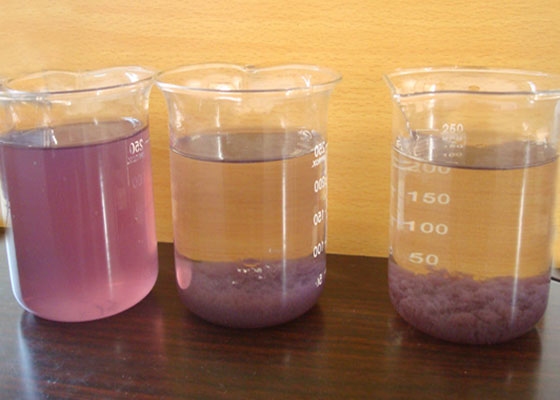

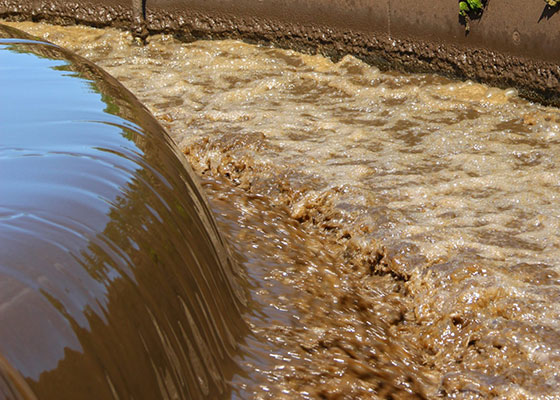
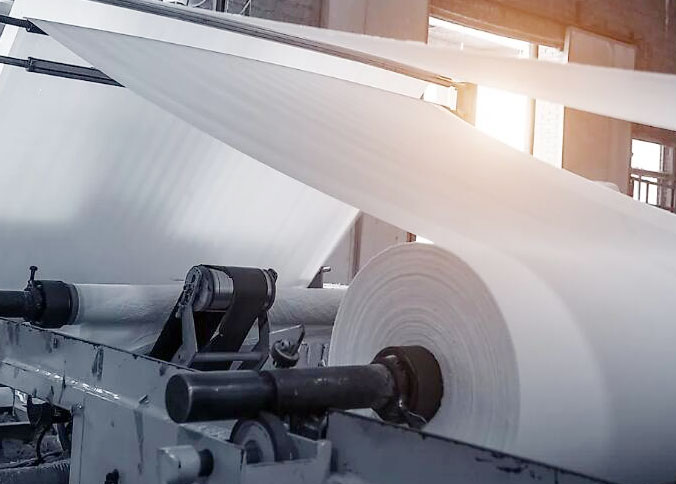
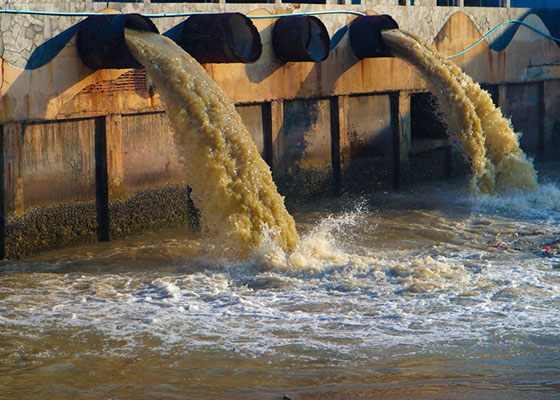
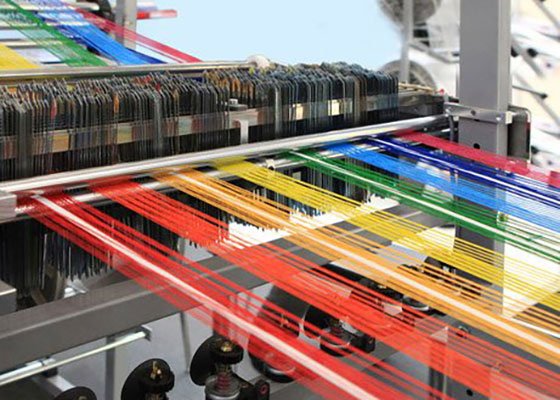
Frequently Asked Questions About PAM Chemical
Polyacrylamide PAM is a general term for polymers obtained from acrylamide homopolymers or copolymers with other monomers. It is one of the most widely used varieties of water-soluble polymers. Because the structural unit of PAM chemical contains an amide group, it is easy to form hydrogen bonds, which makes it with good water solubility and high chemical activity. At the same time, it is easy to obtain various modifications of branched or network structure through grafting or cross-linking. All the performances make it have a wide range of applications.
PAM for water treatment
PAM flocculant can be used in raw water treatment, sewage treatment, industrial water treatment. Used in conjunction with activated carbon in raw water treatment, it can be used for coagulation and clarification of suspended particles in domestic water. Using organic flocculant acrylamide instead of inorganic flocculant, the water purification capacity can be improved by more than 20% even without modification of the sedimentation tank.
Applications in Oil Recovery
Polyacrylamide is widely used in drilling, cementing, completion, workover, fracturing, acidizing, water injection, water plugging and profile control, and tertiary oil recovery operations in oil production. Polyacrylamide solution has high viscosity, good thickening, flocculation and rheological adjustment. So it is usually used as oil displacement agent and drilling mud conditioner in oil production. Adding polyacrylamide in tertiary oil recovery can increase the oil displacement capacity, avoid oil layer breakdown, and improve the recovery rate of oil beds.
Applications in Papermaking Field
In papermaking field, PAM chemical is widely used as retention aid, drainage aid, leveling gent, etc. It can help to improve the quality of paper, dewatering performance of pulp, retention rate of fine fibers and fillers, reduce consumption of raw materials and pollution to the environment. At the same time, used as a dispersant, it can improve the uniformity of paper.
The mechanism of action of PAM polyacrylamide in papermaking is that the particles in the slurry are retained on the filter cloth by flocculation by electric neutralization or bridging. The formation of flocs can also make the water in the slurry easier to filter out, reduce the loss of fibers in white water, reduce environmental pollution, and help improve the efficiency of equipment such as filtration and sedimentation.
- Flocculation performance. PAM chemical can make suspended substances neutralize by electricity, bridge adsorption, and thus play a flocculation effect.
- Adhesion properties. It can play a role in bonding through mechanical, physical and chemical effects.
- Resistance reduction. Polyacrylamide PAM can effectively reduce the frictional resistance of the fluid. Adding a small amount of PAM chemical to the water can reduce the resistance by 50-80%.
- Thickening property. PAM has thickening effect under neutral and acid conditions. When the pH value is above 10, polyacrylamide powder is more easily hydrolyzed. Thickening property will be more pronounced in a semi-reticular structure.
- Polyacrylamide powder can’t be directly added to sewage. It must be dissolved in water before use, and then use polyacrylamide solution for sewage treatment.
- Use clean water to dissolve PAM powder. Generally, just use water at room temperature, no need to heat it. However, the dissolution is very slow when the water temperature is lower than 5℃. Increasing the water temperature will speed up the dissolution rate, but above 40℃ will accelerate the degradation of the PAM polymer and affect use effects.
- In general, tap water is suitable for preparing polymer solution. Strong acid, strong alkali, high salt water are not suitable.
- Sealed storage. Prolonged exposure to air will result in poor product performance.
- Pay attention to moisture, heat and place in a dry, cool and ventilated warehouse.
Choose Reliable Polyacrylamide Manufacturer - Fengbai
As one of the well-known polyacrylamide manufacturers in China, fengbai has been recognized by the industry for its integrity, strength, and product quality. With more than 15 years of experience, Fengbai company has been a leading water treatment chemical manufacturer and supplier in China.
Fengbai has a scientific and complete quality management system, it has obtained ISO9001: 2008 quality management system, and was awarded AAA Credit Enterprise in the banking system. Fengbai company has already passed the quality authentication of ISO9001, HACCP, KOSHER and HALAL, etc., we always provide good quality products for our customers.
Fengbai PAM chemical has been exported to many countries and regions. We have rich export experience. Please feel free to leave a message to get a free quote. We look forward to cooperating with you.
